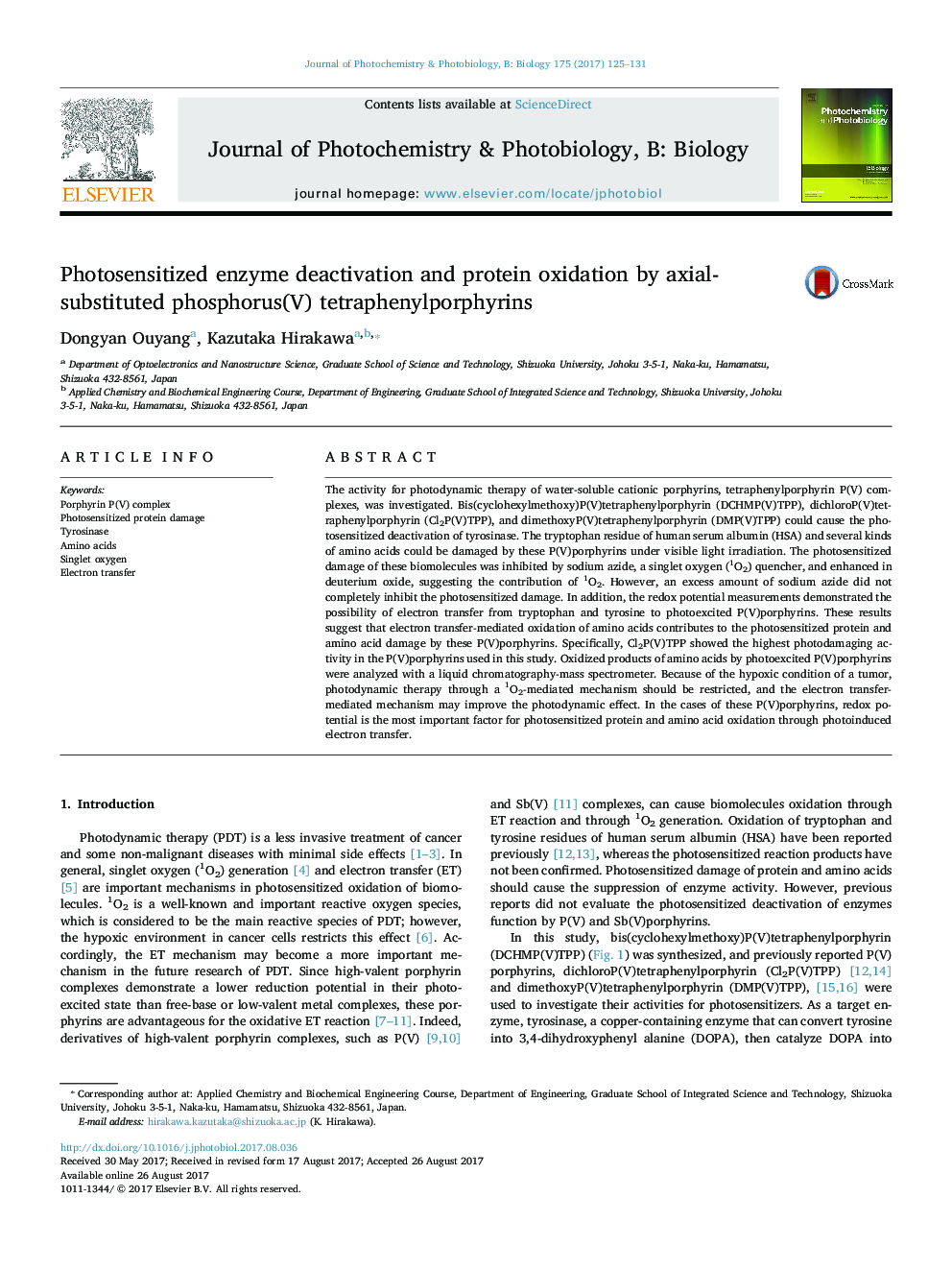| Article ID | Journal | Published Year | Pages | File Type |
|---|---|---|---|---|
| 6452519 | Journal of Photochemistry and Photobiology B: Biology | 2017 | 7 Pages |
â¢Photoexcited P(V)porphyrins caused the deactivation of tyrosinase.â¢Human serum albumin and amino acids were also photodamaged by P(V)porphyrins.â¢Electron transfer and singlet oxygen generation contribute to the photodamage.â¢The axial substituent of the central phosphorus atom affects the binding ability.â¢Photooxidized products of amino acids were analyzed using an LCMS.
The activity for photodynamic therapy of water-soluble cationic porphyrins, tetraphenylporphyrin P(V) complexes, was investigated. Bis(cyclohexylmethoxy)P(V)tetraphenylporphyrin (DCHMP(V)TPP), dichloroP(V)tetraphenylporphyrin (Cl2P(V)TPP), and dimethoxyP(V)tetraphenylporphyrin (DMP(V)TPP) could cause the photosensitized deactivation of tyrosinase. The tryptophan residue of human serum albumin (HSA) and several kinds of amino acids could be damaged by these P(V)porphyrins under visible light irradiation. The photosensitized damage of these biomolecules was inhibited by sodium azide, a singlet oxygen (1O2) quencher, and enhanced in deuterium oxide, suggesting the contribution of 1O2. However, an excess amount of sodium azide did not completely inhibit the photosensitized damage. In addition, the redox potential measurements demonstrated the possibility of electron transfer from tryptophan and tyrosine to photoexcited P(V)porphyrins. These results suggest that electron transfer-mediated oxidation of amino acids contributes to the photosensitized protein and amino acid damage by these P(V)porphyrins. Specifically, Cl2P(V)TPP showed the highest photodamaging activity in the P(V)porphyrins used in this study. Oxidized products of amino acids by photoexcited P(V)porphyrins were analyzed with a liquid chromatography-mass spectrometer. Because of the hypoxic condition of a tumor, photodynamic therapy through a 1O2-mediated mechanism should be restricted, and the electron transfer-mediated mechanism may improve the photodynamic effect. In the cases of these P(V)porphyrins, redox potential is the most important factor for photosensitized protein and amino acid oxidation through photoinduced electron transfer.
Graphical AbstractDownload high-res image (189KB)Download full-size image
